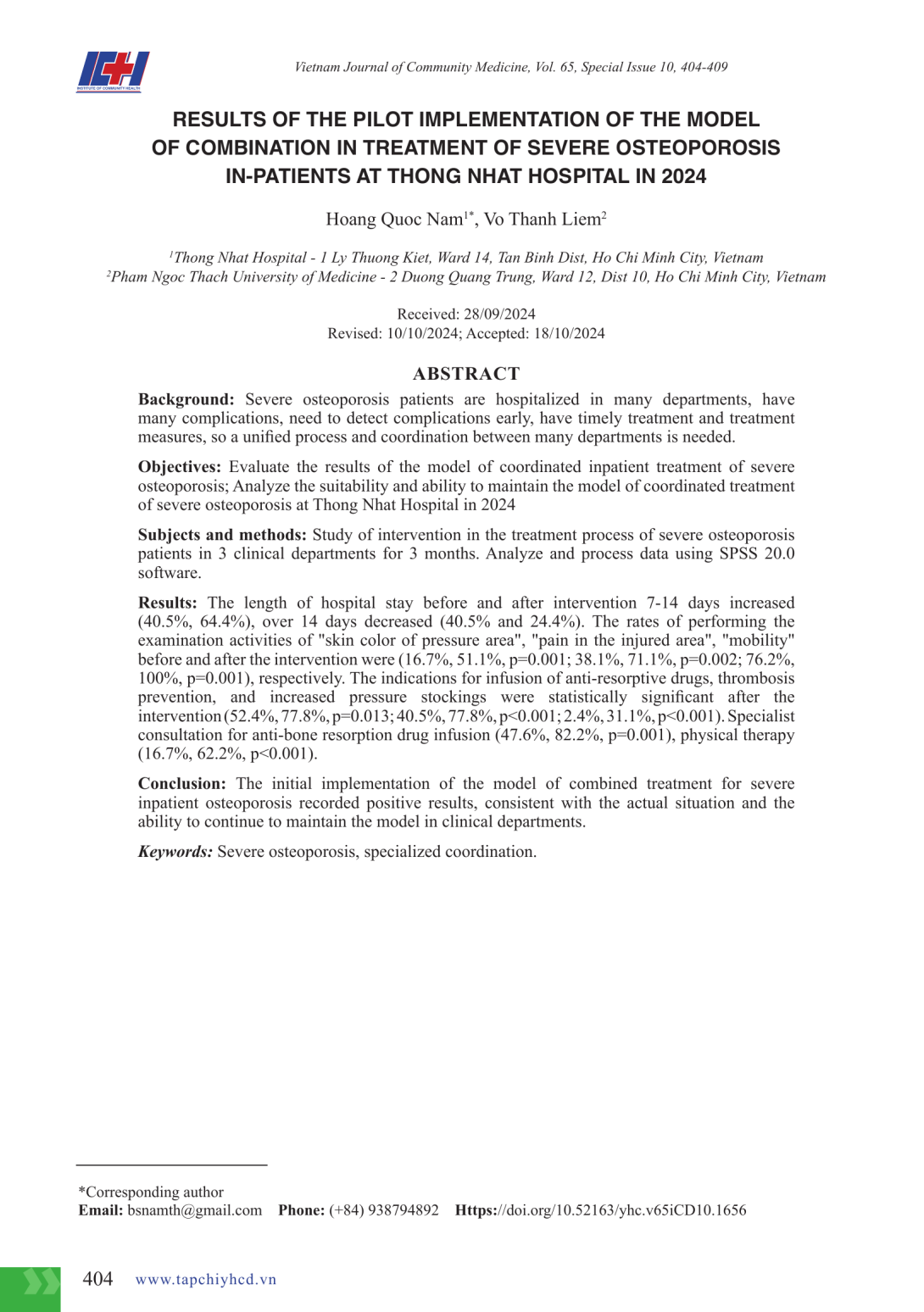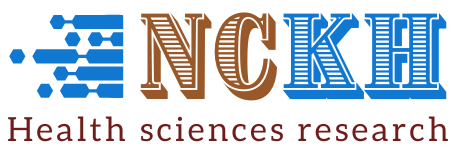
Bệnh nhân loãng xương nặng điều trị nội trú nằm tại nhiều khoa, có nhiều biến chứng, cần phát hiện sớm biến chứng, có biện pháp xử lý và điều trị kịp thời do vậy cần quy trình thống nhất và phối hợp nhiều khoa. Mục tiêu: Đánh giá kết quả hoạt động mô hình phối hợp điều trị nội trú loãng xương nặng; Phân tích tính phù hợp và khả năng duy trì hoạt động mô hình phối hợp điều trị loãng xương nặng tại Bệnh viện Thống Nhất năm 2024. Đối tượng và phương pháp nghiên cứu: Nghiên cứu can thiệp quy trình điều trị bệnh nhân loãng xương nặng tại 3 khoa lâm sàng trong 3 tháng. Phân tích và xử lý số liệu bằng phần mềm SPSS 20.0. Kết quả: Thời gian nằm viện trước, sau can thiệp 7-14 ngày tăng lên (40,5%, 64,4%), trên 14 ngày giảm đi (40,5% và 24,4%). Tỷ lệ thực hiện hoạt động thăm khám “màu sắc da vùng tỳ đè”, “đau vùng tổn thương”, “khả năng vận động” trước sau can thiệp lần lượt là (16,7%, 51,1%, p=0,001; 38,1%, 71,1%, p=0,002; 76,2%, 100%, p=0,001). Chỉ định truyền thuốc chống huỷ xương, dự phòng huyết khối, vớ áp lực tăng có ý nghĩa thống kê sau can thiệp (52,4%, 77,8%, p=0,013; 40,5%, 77,8%, p<0,001; 2,4%, 31,1%, p<0,001). Hội chẩn chuyên khoa để truyền thuốc chống hủy xương (47,6%, 82,2%, p=0,001), tập vật lý trị liệu (16,7%, 62,2%, p<0,001). Kết luận: Bước đầu triển khai mô hình phối hợp điều trị loãng xương nặng nội trú ghi nhận kết quả tích cực, phù hợp với tình hình thực tế và có khả năng tiếp tục duy trì triển khai mô hình tại các khoa lâm sàng.
Severe osteoporosis patients are hospitalized in many departments, have many complications, need to detect complications early, have timely treatment and treatment measures, so a unified process and coordination between many departments is needed. Objectives: Evaluate the results of the model of coordinated inpatient treatment of severe osteoporosis; Analyze the suitability and ability to maintain the model of coordinated treatment of severe osteoporosis at Thong Nhat Hospital in 2024. Subjects and methods: Study of intervention in the treatment process of severe osteoporosis patients in 3 clinical departments for 3 months. Analyze and process data using SPSS 20.0 software. Results: The length of hospital stay before and after intervention 7-14 days increased (40.5%, 64.4%), over 14 days decreased (40.5% and 24.4%). The rates of performing the examination activities of "skin color of pressure area", "pain in the injured area", "mobility" before and after the intervention were (16.7%, 51.1%, p=0.001; 38.1%, 71.1%, p=0.002; 76.2%, 100%, p=0.001), respectively. The indications for infusion of anti-resorptive drugs, thrombosis prevention, and increased pressure stockings were statistically significant after the intervention (52.4%, 77.8%, p=0.013; 40.5%, 77.8%, p<0.001; 2.4%, 31.1%, p<0.001). Specialist consultation for anti-bone resorption drug infusion (47.6%, 82.2%, p=0.001), physical therapy (16.7%, 62.2%, p<0.001). Conclusion: The initial implementation of the model of combined treatment for severe inpatient osteoporosis recorded positive results, consistent with the actual situation and the ability to continue to maintain the model in clinical departments.
- Đăng nhập để gửi ý kiến
